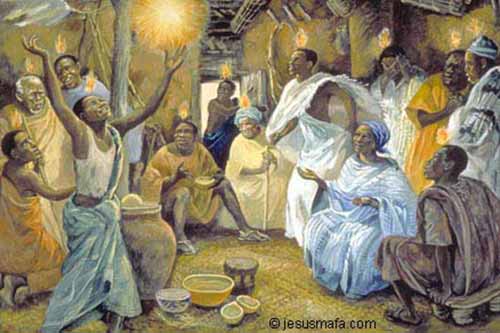
The 50th Day of the Easter Season.
50 is 7×7 +1
49 is a sabbath of sabbaths – 50 is the start of a new cycle of those.
50 is the number of the Jubilee (Leviticus 25:8-55; 27:14-34; Numbers 36:1-9).
Pentecost πεντηκοστή ἡμέρα, pentekostē hēmera is the fiftieth day.
In the early church the season of Pentecost was not the period following the Day of Pentecost, it was the 50 day season from Easter Day until the Day of Pentecost.
50 is approximately a seventh of the year – the 50 day season of Easter is celebrated as if it is one day – it is the Great Sunday of the year.
There is a connection with 8. There are 8 Sundays in the Easter Season. It has been suggested that the English expression “Whitsunday” derives from the French huit (eight), Pentecost being le huitième dimanche, the eighth Sunday of Easter.
8 = 7+1
ie. 8 is beginning again (as in the musical scale)
a new beginning
the eighth day is the beginning of a new week.
The ark has 8 people saved through the water (2 Peter 2:5)
The Jewish male is circumcised on the eighth day.
The Hebrew word for eight שְׁמוֹנֶה (Sh’moneh) is from a root meaning to make or to cover with fat – it is about superabundance.
In John, the Risen Jesus appears on the “eighth day” in John 20:26ff (poorly translated in NRSV, NIV, etc)
The Day of Pentecost is the eighth Sunday of the Easter Season.
It has been suggested that the English expression “Whitsunday” derives from the French huit (eight), Pentecost being le huitième dimanche, the eighth Sunday of Easter.
Octagonal (eight-sided) fonts are no accident. They occur from at least early in the fourth century and form one of the most common shapes for fonts and baptistries in Europe. Octagonal fonts interpret baptism as resurrection with Christ, and new life in Christ (cf Rom 6:4b,9-11; Col 3:1).
.


